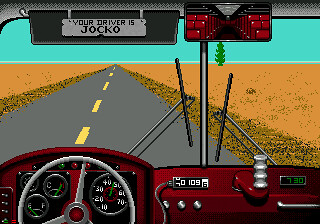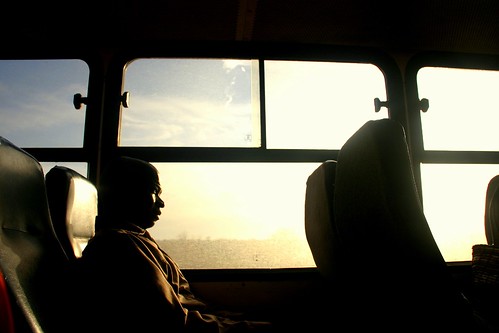Sunday, December 26, 2010
Sunday, December 19, 2010
BUS STORY # 227 (The Desert Bus Christmas Story)
Here’s the lead: a sketch comedy team based in British Columbia raised $208,349.82 this past November for an organization that donates toys, books, and games to hospitalized children. They did this by by playing a video game until people stopped sending them donations.
What makes this a bus story is the video game used to raise the funds. The game is Desert Bus.
Here’s the story.
The organization donating toys to hospitalized children is called Child’s Play. Child’s Play was organized by gamers, and currently has over 100,000 members. It began in 2003 and to date has contributed more than seven million dollars to some 70 children’s hospitals in North America, including New Mexico’s UNM Children’s Hospital here in Albuquerque.
LoadingReadyRun is the sketch comedy team that raised the more than $200,000 for Child’s Play this November. Interestingly, they were also founded in 2003. The team is noted for producing a new sketch comedy video every week.
Desert Bus is an unreleased video game that was part of a package of minigames called Smoke and Mirrors. It was designed by the comedy team Penn & Teller (although Jillete Penn credits Eddie Gorodetsky for Desert Bus). Wikipedia provides a nice summary of the Smoke and Mirrors story:
"The game starred the comedy-magician duo Penn & Teller. The publisher Absolute Entertainment went out of business before they could release the game, yet the game was featured and previewed in various gaming publications such as Electronic Gaming Monthly and reviewed by VideoGames magazine...The game re-surfaced years later when Frank Cifaldi, editor of Lost Levels, a website dedicated to unreleased video games, received a copy of the game from a reviewer who had covered it years ago."
The Desert Bus game requires a player to drive a bus from Tucson to Las Vegas -- in real time. We’re talking an eight-hour drive/game here. And, no: the game cannot be paused.
Sunday, December 12, 2010
BUS STORY # 226 (The Conversation Starter)
Sunday, December 05, 2010
BUS STORY # 225 (Some Things Are Universal)
I’m watching what I’ve already assumed is a couple get on the bus.
It’s not that I’m an exceptionally perceptive guy. First, this is a middle-of-the-block stop, and there’s just the two of them. Second, the two of them are male and female who look to be around the same age. And: they are both black.
So I’m watching this man and woman board the bus, put their money in the fare box, then promptly upset my assumption by sitting in different seats. She takes the seat in front of me -- a window seat on the driver’s side of the bus -- and busies herself with her shopping bag and her purse. He takes the window seat directly across the aisle from her and looks out the window.
I have just finished processing this with the old saw, "Never assume, for it makes an ASS out of U and ME,” when the woman starts talking out loud. I don’t know who she’s talking to because she’s looking at the partition behind the driver’s seat. And I don’t know what she’s saying because she’s speaking a foreign language.
The man across the aisle answers her -- in a foreign language! The same foreign language, I assume.
I look over, and he’s looking at her. And now that I’m looking at him, I conclude they’re speaking an African language or dialect.
It’s not just that the sounds have no discernible trace of the Indo-European languages. It’s also that he now looks African to me, in the way the South African faces in the crowds or the Ghana soccer players looked African when I watched some of the World Cup games this summer. African, as distinct from African-American.
On the other hand, looking at the woman in front of me, I can’t see anything distinctly African about her at all. The only thing I notice is that, as the conversation continues, she continues to look straight ahead.
He continues to look at her when he answers, and now I see he’s using hand and arm gestures when he answers that don’t look at all American to me.
Still, I know something of what’s going on here. It’s there in the vocal tones, body language, and where the man is concerned, facial expressions. And that’s how I will realize later that neither of them is from Africa. He is from Mars; she is from Venus.
Some things are universal.
__________ *
his story was revised 12/7. See comments for discussion.
__________
The photo at the top of this story is titled “Morning Bus Ride” ⓒ All Rights Reserved, and is posted with the kind permission of joeysee. You can see this photo at: http://www.flickr.com/photos/joeysee/3238425250/ You can see all joeysee’s photos at: Photo by JoeySee and www.joeysee.com




